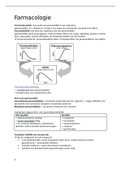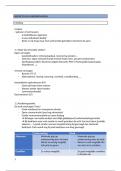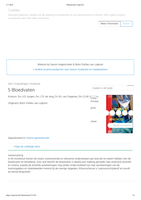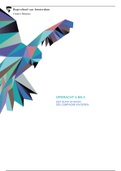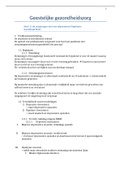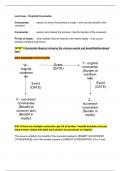Terminology
• Older terms – hermaphrodite, pseudohermaphrodite
• Intersex used until recently
o ‘One who is born with genitalia and/or secondary sex characteristics determined as neither
exclusively male or female, or which combine features of the male and females sexes
• Most decided on and used term now is disorders of sex development (DSD)
• Male pseudohermaphroditic
o 46, XY
o Testicular tissue present
o Ambiguous or female genitalia
• Females pseudohermaphroditic
o 46, XX
o External genitalia are virilised (masculinised) to resemble those of a normal male or are
ambiguous
• True hermaphroditism
o Most are 46, XX with Y-derived DNA sequences
o Some are chimeras with 46, XX and 46, XY cell lines
o Both testicular and ovarian tissue present
o Genitalia often ambiguous
Intersex
• Fausto-Sterling (2000) estimated 1.7% live births exhibit a dress of sexual ambiguity, with 0.1%-
0.2% ambiguous enough for specialist attention (including surgery)
• Sax (2002) highest Fausto-Sterling included Klinefelter and turner syndromes which aren’t regarded
as DSDs/Intersex – estimated incidence of true intersexual conditions are 0.018%
• Population variation in incidence – e.g., populations with founder effect have higher incidence
• 46, XY with pure gonadal dysgenesis – bilateral streak gonads with retained Mullerian structures,
fallopian tubes and midline uterus
• 46, XX with female pseudo-hermaphroditism caused by congenital adrenal hyperplasia leading to
severe clitoral hypertrophy
• 46, XY with male pseudo-hermaphroditism and incomplete masculinisation of external genitalia –
microphallus, perineoscrotal hypospadias (opening of urethra not at tip of penis) and bifid pre-
penile scrota
• 46, XY with persistent Mullerian duct syndrome – Mullerian structure and Wolffian structure
present
• Intersex should be restricted to cases where chromosomal sex is inconsistent with phenotypic sex,
or phenotype is neither classifiable as male or female
Disorders of sex development (DSDs)
• New system/terminology established in 2006
• ‘Congenital conditions in which development of chromosomal, gonadal or anatomical sex is
atypical’
• Encompasses a wide spectrum of phenotypes
• Includes disorders resulting from errors of primary sex determination and errors of sex
differentiation
• Change of classification partly due to moving away from associations with genders and to increase
clarity by grounding classification system in genetics
• Nomenclature changes
o Intersex → DSDs
, o Male pseudo-hermaphroditism → 46, XY DSD
o Female pseudo-hermaphroditism → 46, XX DSD
o True hermaphroditism → ovotesticular DSD
o XX male or XX sex reversed →46, XX testicular DSD
o XY sex reversed → 46, XY complete gonadal dysgenesis
Diagnosis of DSDS (Turnpenny et al., 2022)
46, XY DSDs
• Largest group of DSDs
• Less likely to receive definitive genetic diagnosis than 46, XX group
• Less than 15% complete gonadal dysgenesis due to SRY gene defects
• Disorders of gonadal (testicular development)
o Complete/partial dysgenesis – SRY, SOX9, SF1, WT1, DHH; mutation in any gene include in
very early sex development
o Ovotesticular DSD – testis regression
• Disorders of androgen synthesis
o Mutations in gene encoding enzyme at any step of testosterone synthesis
o 5-reductase deficiency
• Disorders of androgen action
o Mutation in androgen receptors
o Androgen insensitivity syndrome (AR gene)
46, XX DSDs
• Congenital adrenal hyperplasia most common form
• Disorders of adrenal function account for >90%
• Defects in steroidogenesis that lead to excess androgens in developing female foetus – virilising
effect on female phenotype
• Disorders of gonadal (ovarian) development
o Gonadal dysgenesis
o Ovotesticular DSDs
o Testicular DSD – SRY, dup SOX9, RSP01
• Androgen excess
o Foetal – different forms of congenital adrenal hyperplasia
o Fetoplacental



